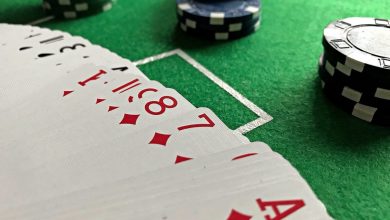
Ah, the enigmatic world of betting odds. They’re at the heart of every wager, the fulcrum on which fortunes swing. To many newcomers, odds can appear as cryptic numbers, making them flinch away. But, as someone who has spent countless hours analyzing and navigating the ebb and flow of the iGaming world, I can assure you they’re not as baffling as they might seem. This guide is your key to unlocking the mystery of 7Bit Casino, not just to understand them but to wield them as a potent weapon in your betting arsenal.
The DNA of Betting Odds
Odds serve as indicators, pointing towards potential outcomes and the profits one might accrue. They tell a story, often reflecting the likelihood of a particular event happening.
What fuels the shift in odds?
- Public Opinion: Odds can be swayed by where the majority are placing their bets.
- News & Updates: A sudden injury or change in team dynamics can alter the odds overnight.
- Historical Performance: Previous matches or races influence odds, especially if patterns emerge.
- External Factors: Weather, morale, or even political events can tilt the scales.
Through our knowledge gained in practice, we have discerned that professionals don’t just follow odds—they frequently anticipate changes, becoming active participants in the narrative.
Types of Betting Odds
Different cultures, different methods. Betting odds can be represented in various formats. Here’s a closer look:
- Fractional Odds: Widely used in the UK, these odds are presented as fractions (e.g., 5/1, which reads “five-to-one”). If a bettor stakes $1, they stand to win $5 on top of their initial stake.
- Decimal Odds: Popular in Europe, Canada, and Australia, these odds are depicted as decimals (e.g., 1.50). They show potential total payout, rather than just profit.
- Moneyline/American Odds: Found mainly in the US, these odds are either positive (+200) or negative (-150). Positive numbers signify potential profit on a $100 stake, while negative ones indicate how much needs to be staked to earn $100.
- Parlay Odds: These combine multiple bets into one, elevating the stakes and potential payout. They’re attractive but also risky, as all events in the parlay must win.
Calculating Potential Profits
To truly become adept at using odds to your advantage, one needs to understand potential profit calculations.
- For Fractional Odds: Profit = Stake x (Numerator/Denominator)Say, you place a $10 bet at odds of 5/1. Your potential profit is $10 x (5/1) = $50.
- For Decimal Odds: Profit = Stake x Odds – StakeA $10 bet at 1.50 odds? Your potential gain is $10 x 1.50 – $10 = $5.
- For Moneyline Odds: For positive values, Profit = Stake x (Odds/100). For negative values, Profit = (100/Odds) x Stake.
Why Odds Differ Across Bookmakers
It’s an intriguing phenomenon that different bookmakers might present divergent odds for the identical event. Two primary reasons account for these discrepancies. Firstly, individual bookmakers often have distinct market strategies. They may tweak the odds to allure bets towards a certain outcome, especially when this aligns with their current liabilities. Secondly, the speed and timeliness with which bookmakers access critical information play a significant role. For instance, one bookmaker might get wind of a crucial player injury earlier than a competitor and consequently adjust the odds faster. These factors, intertwined with several others, lead to the fascinating tapestry of varied odds across the free mobile slots landscape.
Conclusion
Betting odds, though seemingly complex, can be your strongest ally with the right understanding. They’re not mere numbers; they’re windows into potential outcomes, reflecting myriad factors that influence a game’s trajectory. Armed with this knowledge, you’re now better equipped to navigate the exciting terrain of the betting world. Happy wagering!



